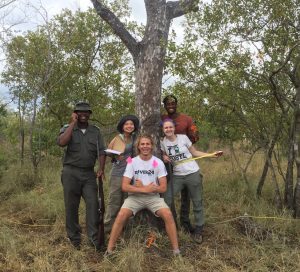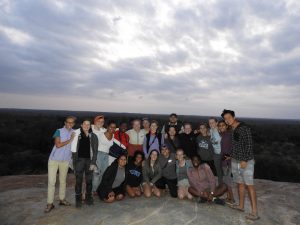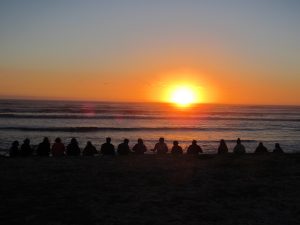Emma Waltman
Washington University in St. Louis
African Ecology & Conservation in South Africa – Spring 2018

The second leg of our OTS program in South Africa began when we entered Kruger National Park. We were previously staying at Nylsvley Nature Reserve, where we received a thorough introduction to savanna ecology in the classroom and in the field. Nylsvley was a particularly great first stop because of the lack of dangerous game in the reserve. We were free to explore the savanna on a hike or run without the risk of getting charged by a rhino or eaten by a lion. At Nylsvley, we learned about South African history and culture through lectures, readings and movies documenting apartheid and post-apartheid South Africa.
Now at Kruger, we’ve entered a savanna system complete with large herbivores and big cats. Upon leaving our electric-fence-enclosed campus, you won’t find anyone outside a game drive vehicle unless accompanied by a game guard. Although we’ve lost our freedom to roam, we now have the entirety of southern Kruger to study as field ecologists. We’ve learned about different savanna ecosystems at Kruger and how they vary greatly with soil-type (granitic in the west, basaltic in the east). We’ve also heard South African National Parks (SANParks) staff scientists speak first-hand about ecological and political hurdles that come with managing Kruger’s nearly 2 million hectares. One such problem is the rapid population growth of African Elephants in Kruger and how they are decreasing the number of big trees in the park by uprooting them, causing canopy damage, and stripping bark.

Last week, we split into four groups and collected data for different long-term research projects. In my group, we collected data to see what ecological consequences may stem from the loss of large trees in Kruger if elephant numbers continue to grow exponentially. We went to different sites, one with granitic (nutrient-poor) and one with basaltic (nutrient-rich) soil, and identified all woody species growing five meters from large marula trees and all woody species in a five-meter diameter control plot (without any large trees). This was repeated six times at each site.
At sites with both soil types, we hypothesized that woody communities under large trees would have a larger number of species, number of individuals, and woody biomass than the control because large trees provide shade, wetter topsoil (through bringing up water from long tap roots), and nutrients (from dung of large animals seeking shade). We have yet to run data analyses, but if our data supports the hypothesis, it can be inferred that a loss in large trees at Kruger may mean a decrease in shrubby and smaller trees as well.


